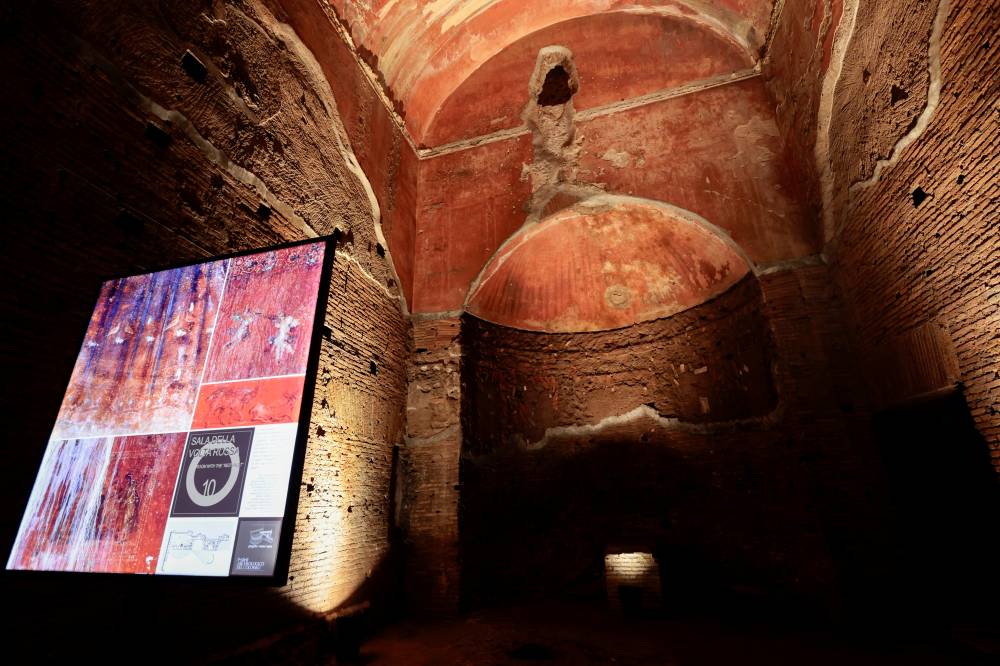New section of Emperor Nero’s ‘Golden House’ reopens

ROME—A section of Ancient Roman Emperor Nero’s vast underground Domus Aurea (Golden House) was reopened to the public on Friday after extensive restoration and repair work to protect the nearly 2,000-year-old site from water damage.
The inauguration came as Rome is preparing for an influx of tourists during the 2025 Roman Catholic Holy Year, or Jubilee, during which the Eternal City expects as many as 32 million arrivals.

Visitors to Nero’s palace will be welcomed through a new entrance on the western side, leading to a wide hall known as the “Neronian portico” and then to rooms still bearing traces of their original colorful frescoes, mosaics and marbles.
The spectacular residence was built in 64 A.D. after a great fire destroyed most of what was then central Rome, the one through which Nero infamously, and probably apocryphally, is said to have fiddled.

It was rediscovered in the 15th century, and Renaissance painters including Raphael and Michelangelo would study its frescoes by lowering themselves on ropes through holes made in the ceiling, still visible today.

One room that reopened on Friday includes a graffiti by one of these artists, Pinturicchio, who scribbled his name as “Pintorichio.” Back in his time, someone added the word “Sodomito,” a homophobic insult that survives to this day.

Another area, the Nymphaeum, features a vault decorated with seashells and a central mosaic showing Ulysses offering wine to Polyphemus, the one-eyed monster from Greek mythology cited in The Odyssey.

Nero’s palace was named after the gold leaf covering some of its walls, and was part of a complex that once included an artificial lake where the Colosseum now stands. It is said to have contained a 36.6-meter statue of the emperor.

The ruins now lie below a park next to the Colosseum. They survived because they were covered up and filled with rubble to serve as the foundation of baths built by the later Emperor Trajan.
Conservation authorities, however, face a constant battle with water infiltration from the ground above the palace, a problem that has led to repeated and prolonged closures of the monument over the past decades.
Reuters, the news and media division of Thomson Reuters, is the world’s largest multimedia news provider, reaching billions of people worldwide every day. Reuters provides business, financial, national and international news to professionals via desktop terminals, the world's media organizations, industry events and directly to consumers.

















